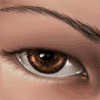
Commission - Eleysia World Map
Commission for Mizuho164, who wished me to collaborate with him in bringing his world ideas to life :) Well, as a map, anyway ;P
Adobe Photoshop CS5.
Adobe Photoshop CS5.
Category Artwork (Digital) / Fantasy
Species Unspecified / Any
Size 1200 x 720px
File Size 854.5 kB
Listed in Folders
Thank you so much! Well, do let me know! <3
I find that working on a map is (sensibly enough) a really great chance at world-building - you might be trying to fill out an area you hadn't considered much before, so you try to think of a name or idea. Maybe there's a town in the mountains - why? They mine, perhaps! Maybe it's hardly mentioned because it was abandoned, because something terrible happened in the mines. Or maybe it's simply remote, and has some nice trade going on with a neighbouring town, which manufactures the ore and sells the products back to mining-town, making them self-sufficient. And now you've got miniature stories and histories and cultures for a place you hadn't even thought of before :3
I find that working on a map is (sensibly enough) a really great chance at world-building - you might be trying to fill out an area you hadn't considered much before, so you try to think of a name or idea. Maybe there's a town in the mountains - why? They mine, perhaps! Maybe it's hardly mentioned because it was abandoned, because something terrible happened in the mines. Or maybe it's simply remote, and has some nice trade going on with a neighbouring town, which manufactures the ore and sells the products back to mining-town, making them self-sufficient. And now you've got miniature stories and histories and cultures for a place you hadn't even thought of before :3
hehe i like how you view things, i wrote 1 main book, based in a world that i was working on several other books to follow in it, each with its own story, linked to the main, sadly when i got to last chapter of my main book, my pc died and, well silly me been young and dumb didnt have any backups other than the few notes i scribbled on paper when i had random ideas, but ill get into it again at some point, just takes time >.<
I have no computer drawing skills, or drawing skills at all, so all my maps turn out like this http://www.furaffinity.net/view/10315301/
Here's a link to my map tutorial :) It hopefully covers a bit of everything! http://jocarra.deviantart.com/art/Y.....rial-288285025
What do you mean by creating deserts/jungles/etc.? Do you mean, how to design the world geography so they're realistic? Or how to depict them on the map?
I use Adobe Photoshop, but I think the tutorial should work for any decent graphics program.
What do you mean by creating deserts/jungles/etc.? Do you mean, how to design the world geography so they're realistic? Or how to depict them on the map?
I use Adobe Photoshop, but I think the tutorial should work for any decent graphics program.
Do you have any background in geography? I only have basic undergraduate-level understanding, but a little helps :) Here are a few super-basic pointers:
- Keep in mind the major "belts" on a planet. Around the equator is generally hot, wet, and tropical. Around the Tropics of Cancer/Capricorn (around 20-30 degrees latitude) is generally desert (see this map: http://study.com/cimages/videoprevi.....rts_125048.jpg ). Above/below the polar circles, towards the poles, is generally tundra/icy. Between the tropics and the polar circles is generally a temperate zone.
- These "basics" are affected by things like ocean currents and prevailing winds (a map of prevailing winds: https://geogermanykat.files.wordpre.....them_winds.jpg . An area that is normally cold might be warmed by a wind blowing from a warmer area, for instance. Or an area that is normally warm might be cooled by a wind blowing over a nearby cold ocean current.
- Areas close to large bodies of water are almost always cooler than the surrounding areas. Water has a moderating effect on temperature.
- These "basics" are also affected by mountain ranges. For example, the west coast of North America is temperate and rainier than the interior, which has more extreme temperatures and is dryer, because of the mountains. As the wind passes over the Pacific, it picks up moisture, but as it passes over the Rocky Mountains, the moisture is pushed out, leaving the wind on the other side dryer - that's why BC and Washington state are wetter and have lots of forest, whereas Alberta and Montana are dryer and generally can't support much forest. Similarly, if you had mountains in a tropical area, it might be tropical rainforest on one side, but desert on the other.
- When designing a map, I will typically design the land masses first, then determine where mountains will be - you can make this up, or try to imagine what the tectonic plates of the world look like. Then I'll determine the "belts" - is everything above the equator in the temperate zone? Is there a tropical equator running through the middle, with desert on either side. Or does the planet have "fantasy" geography that doesn't follow the normal rules? Then you can start plausibly determining climate zones.
- Keep in mind the major "belts" on a planet. Around the equator is generally hot, wet, and tropical. Around the Tropics of Cancer/Capricorn (around 20-30 degrees latitude) is generally desert (see this map: http://study.com/cimages/videoprevi.....rts_125048.jpg ). Above/below the polar circles, towards the poles, is generally tundra/icy. Between the tropics and the polar circles is generally a temperate zone.
- These "basics" are affected by things like ocean currents and prevailing winds (a map of prevailing winds: https://geogermanykat.files.wordpre.....them_winds.jpg . An area that is normally cold might be warmed by a wind blowing from a warmer area, for instance. Or an area that is normally warm might be cooled by a wind blowing over a nearby cold ocean current.
- Areas close to large bodies of water are almost always cooler than the surrounding areas. Water has a moderating effect on temperature.
- These "basics" are also affected by mountain ranges. For example, the west coast of North America is temperate and rainier than the interior, which has more extreme temperatures and is dryer, because of the mountains. As the wind passes over the Pacific, it picks up moisture, but as it passes over the Rocky Mountains, the moisture is pushed out, leaving the wind on the other side dryer - that's why BC and Washington state are wetter and have lots of forest, whereas Alberta and Montana are dryer and generally can't support much forest. Similarly, if you had mountains in a tropical area, it might be tropical rainforest on one side, but desert on the other.
- When designing a map, I will typically design the land masses first, then determine where mountains will be - you can make this up, or try to imagine what the tectonic plates of the world look like. Then I'll determine the "belts" - is everything above the equator in the temperate zone? Is there a tropical equator running through the middle, with desert on either side. Or does the planet have "fantasy" geography that doesn't follow the normal rules? Then you can start plausibly determining climate zones.
Well, I mean, islands are kind of just mountains that are mostly underwater, so if you have a chain of mountains sort of pointing or fading towards the coast, you can extend the mountain range in the form of an island chain. Island chains simply go where you think there might be underwater volcanos or converging/diverging tectonic plates. Then I usually just sprinkle single islands or bigger islands around in whatever way I think (or the client thinks) looks good :b
There's also something to be said for UNrealistic geography. If it's a fantasy/science-fiction map, it creates fun points of interest to have unnatural-looking formations occasionally. People will see a realistic-seeming world, then a nearly perfectly circular ring of islands and think, "I bet something's up with those!"
There's also something to be said for UNrealistic geography. If it's a fantasy/science-fiction map, it creates fun points of interest to have unnatural-looking formations occasionally. People will see a realistic-seeming world, then a nearly perfectly circular ring of islands and think, "I bet something's up with those!"

 FA+
FA+

















Comments